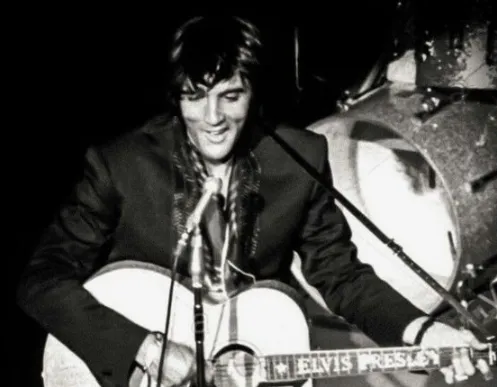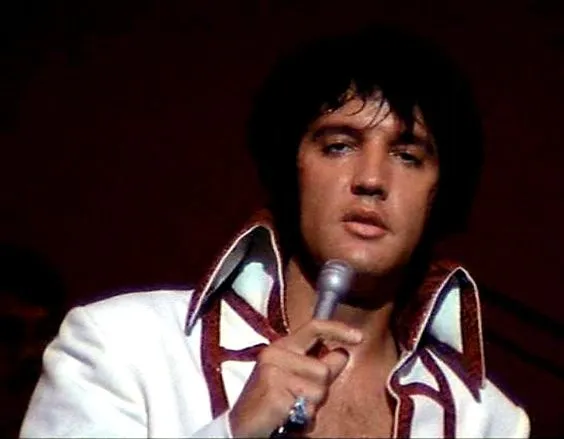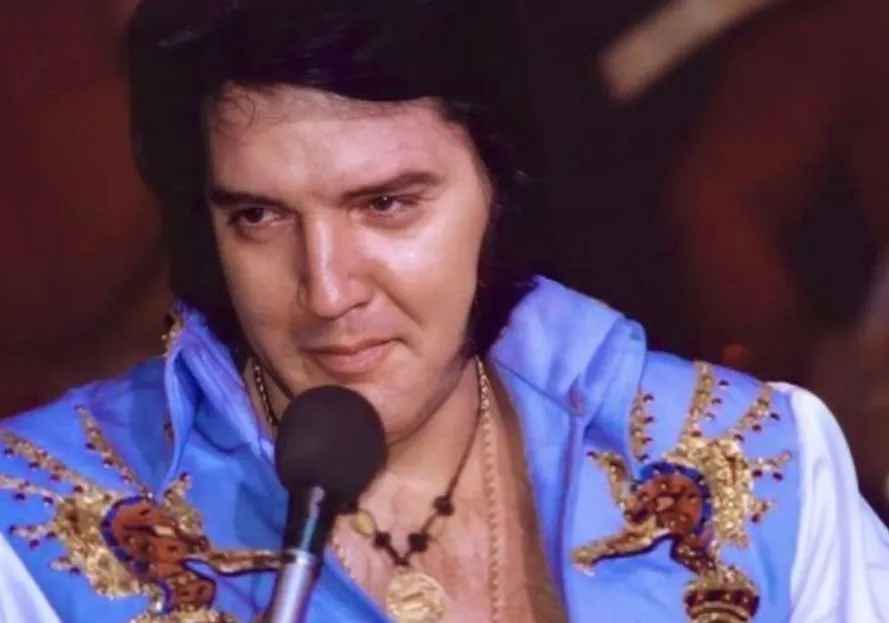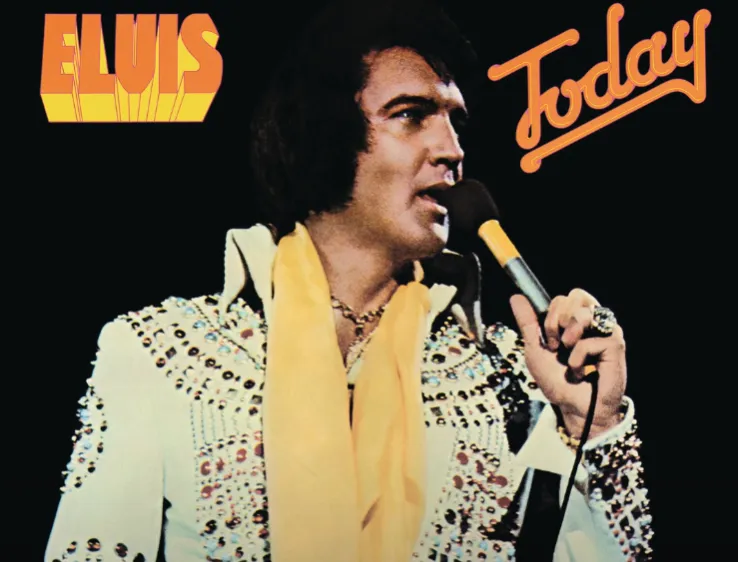In the annals of entertainment history, few moments sparkle as brightly as the collision of two iconic figures: Liberace, the flamboyant virtuoso of the piano, and Elvis Presley, the electrifying force of rock and roll. In 1956, these two luminaries converged at the Riviera Hotel in Las Vegas, a city pulsating with glitz, glamour, and an insatiable appetite for spectacle.

Behind the scenes of their public personas, a series of intimate photographs offer a tantalizing glimpse into a moment of convergence that reverberates through the corridors of time.

The Riviera Hotel, a bastion of opulence nestled amidst the desert sands of Nevada, was a fitting stage for this rendezvous of musical titans. Liberace, bedecked in sequins and feathers, epitomized the essence of Las Vegas extravagance.

His dazzling performances captivated audiences with a blend of technical prowess and theatrical flair. Elvis Presley, on the other hand, embodied a different kind of magnetism—a raw, untamed energy that ignited the passions of a generation. Together, they formed a kaleidoscope of charisma, each reflecting and refracting the other's brilliance.

It was against this backdrop of neon-lit decadence that the lens of photographer Milton H. Greene captured an extraordinary moment of intimacy between Liberace and Elvis.

Greene, renowned for his ability to immortalize the essence of his subjects, seized upon the opportunity to document this collision of musical worlds. The resulting photographs, preserved in monochrome splendor, offer a window into a bygone era when the boundaries between high society and popular culture blurred with electrifying intensity.

In one image, Liberace and Elvis are ensconced in a dimly lit corner of the Riviera's backstage labyrinth. Liberace, his fingers adorned with rings that catch the light like shards of shattered dreams, leans in close to Elvis, his expression a study in enigmatic allure.

Elvis, his youthful features suffused with a mixture of reverence and irreverence, meets Liberace's gaze with a knowing smile. In this fleeting moment of connection, two disparate worlds collide, creating a tableau of intrigue and fascination.

Another photograph transports us to the glittering expanse of the Riviera's main stage, where Liberace holds court at his grand piano. Elvis, his silhouette etched against a backdrop of cascading stars, stands at the edge of the spotlight, his presence a potent counterpoint to Liberace's flamboyance.

Here, in the nexus of performance and spectacle, the boundaries between genres dissolve, giving rise to a symbiotic exchange of energy and influence.

Yet, for all the glamour and allure captured in these images, there lingers an air of mystery—a sense that beneath the surface lies a tapestry of secrets and contradictions. Both Liberace and Elvis were masters of reinvention, adept at crafting personas that transcended the confines of reality. Behind closed doors, away from the prying eyes of adoring fans, they grappled with the weight of their own mythologies, seeking solace in the fleeting moments of connection they shared.

Perhaps it is this undercurrent of vulnerability that lends these photographs their timeless appeal. In the interplay of light and shadow, gesture and expression, we glimpse the humanity that resides at the heart of fame. Liberace and Elvis, for all their larger-than-life personas, were, at their core, individuals navigating the complexities of identity and desire.

As we trace the arc of their respective careers, from the glittering heights of stardom to the shadowy recesses of memory, these photographs serve as a reminder of the enduring power of connection. In an age defined by spectacle and superficiality, they offer a glimpse into the soul of two men who dared to defy convention and embrace the fullness of their own humanity.

In the decades since their fateful encounter at the Riviera Hotel, the legacies of Liberace and Elvis have become indelibly intertwined, their names synonymous with the golden age of Las Vegas entertainment. Yet, it is in moments of quiet intimacy, captured for eternity by the lens of a visionary photographer, that their true essence shines most brightly.

As we gaze upon these images, we are invited to ponder the nature of fame, the fragility of memory, and the enduring power of connection. In the faces of Liberace and Elvis, frozen in time for all eternity, we find echoes of our own longing—for love, for belonging, for immortality in a world that is ever-changing and ephemeral.



